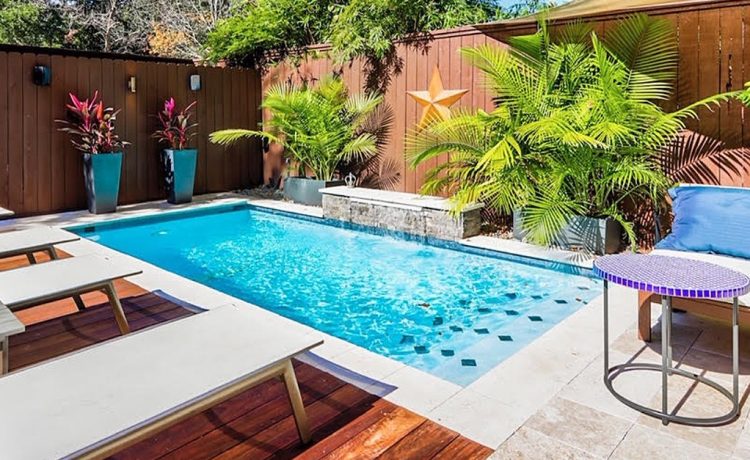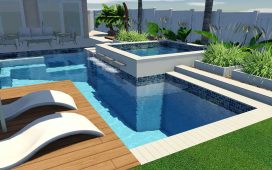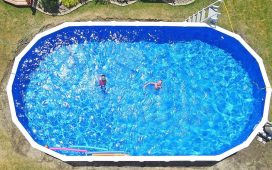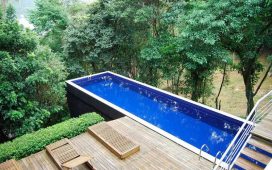An in-ground pool is a kind of swimming pool that is built into the ground such that its highest point is level with the surrounding lawn. It will also be a more permanent addition to your backyard than an above-ground pool. Four main materials are available for use in the construction of in-ground pools, with concrete mixes, fibreglass, and vinyl being the most popular. You should think long and hard about the pros and disadvantages of each pool building option before making a final decision. In the following paragraphs, we’ll go over the pros and cons of each in-ground pool material and the factors you should think about when determining which one is right for you and your yard.
Coatings of plaster or aggregate used on the surface of concrete
Most in-ground pools are made of concrete or plaster. These were also the pioneering materials for the newly fashionable affordable inground pools. Concreting is the process of forming a protective shell out of concrete that is then strengthened with steel. The plastered exterior may absorb water without losing its structural integrity and can be replastered as needed, all thanks to the concrete’s lifespan and porous nature. Though more expensive up front than vinyl, for example, concrete is often considered the best value in the long term since it requires little in the way of replacement and is easy to keep in good condition. Despite this, the preliminary investment in concrete is more.
Here’s how it works
When a hole is dug out in the yard, rebar is used to frame the hole and line the bottom and the sides. At this point, the excavation may be considered complete (steel rods). These may be formed into almost any shape, from squares and hearts to guitars, and customised with features like inclines, declines, steps, and ramps. Shotcrete or gunite, a combination of sand, concrete, and water, is sprayed over a surface using a hose to build the pool shell once the rebar has been set. You may also use gunite in place of shotcrete. After the concrete has set for an appropriate amount of time, a coat of plaster (a substance made from cement and marble dust) is put to the surface. The plaster may also include coloured quartz for a more aesthetically pleasing finish. Plastering is a crucial step in the process since it seals the pool and prevents water leaks.
This method might help a contractor plan the size and shape of a concrete pool. A pool with modern curves shouldn’t cost much more than a pool of the same size but with a more traditional, angular shape.
A typical pool shape is a rectangle
A concrete pool may be the base upon which other, more trendy materials like tile or stone are laid. Thinset mortar is applied to the pool’s surface after the concrete foundation has been poured and allowed to cure (in a sequence of operations similar to those described above). This prepares the surface for the installation of tile or stone. At least 24 hours should pass before finishing the tile with polymer-fortified grout designed to tolerate the constant dampness and pool chemicals.
















